With the National Hockey League seemingly on track for a Jan. 13 start to the 2020-21 season, the uncertainty of the offseason is beginning to lift, and instead of pandemics and disputes over revenue sharing, Washington Capitals fans can start looking forward to the team’s return in about a month.
Where does this edition of the Capitals fit into the grand scheme of things as the league comes back to life? Will this season’s team be shades of the team that was top of the league until Christmas or the one that largely was .500 from Boxing Day into the pause, which featured an uninspired playoff exit against the New York Islanders?
Certainly, the condensed season will be a different one, a throwback to the old Patrick Division days where rivals saw each other often in punishing contests, and also one where the team’s championship window seems to be closing, but no one is sure when it will.
The answers of what Capitals fans could expect this spring could be found in five key questions with the arrival of the new campaign.
Coaching Change Looms Large
Probably the most noticeable change will be behind Washington’s bench, where Peter Laviolette will replace Todd Reirden.
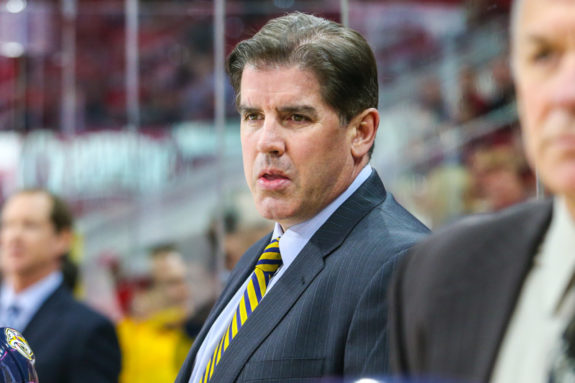
Last season, the Capitals were the league’s best heading into Christmas, posting a 26-6-5 mark before an ugly 7-3 loss to the Boston Bruins on Dec. 23 that seemingly put their season into neutral. Washington went 15-14-3 in their next 32 games, heading into the pause just hanging on to the Metropolitan Division lead. Things didn’t improve in the bubble in Toronto, as after a 1-1-1 preliminary round, they fell to the Islanders 3-0 in the series en route to their second straight first-round playoff exit.
Washington, who have had a history in the Ovechkin era of tuning out coaches when they don’t buy into their message anymore, seemed to do just that to Reirden. The Capitals’ play, especially compared to the first half, was uninspired, and it certainly became evident that he had lost the room by the time the season was interrupted.
Even the team’s defense, which Reirden helped mold under Barry Trotz, seemed to wilt, as John Carlson, who earned a Norris Trophy nomination with a strong first half, was much less effective down the stretch as the team regularly allowed prime scoring chances in the second half of the campaign.
With the change, while Washington had historically not looked for coaches with much NHL experience under Ted Leonsis — Reirden’s predecessor Trotz was the only one hired with any since the ownership change in 1999 — the Capitals signaled they weren’t going to be content with rebuilding the upcoming season in hiring veteran coach Laviolette.
Laviolette, who won a Stanley Cup with the Carolina Hurricanes, also reached the Stanley Cup Final with the Philadelphia Flyers and Nashville Predators.
“Peter is a successful NHL head coach who has won a Stanley Cup and brings a wealth of experience to our team,” Capitals General Manager Brian MacLellan said in a press release at the time of the hire in Sept. “We feel he is a great communicator who will motivate our players to play with passion, structure and discipline, while helping our young players reach their potential.”
Laviolette’s success with his last three teams has been at the outset of his arrival, with an ability to get the attention of his players out of the gate. He won the Cup in his first full season in Carolina in 2006, and reached the Final with the Flyers in his first season in 2010. The Predators reached the Final in his second full season in Nashville in 2017, and so now the onus will be on Laviolette to succeed quickly, as the returns seemingly diminished as his tenure grew in his NHL stops.
Realignment Makes Road Rougher
One underrated aspect of the coming Capitals season will be the reported 56-game schedule, all against divisional opponents. The seven teams that Washington likely will face exclusively this campaign are not a group the Capitals had a ton of success against last season – and they will miss out on teams they did have great matchups with.
The Boston Bruins, Buffalo Sabres, New Jersey Devils, Islanders, New York Rangers, Flyers and Pittsburgh Penguins are the seven teams the Caps may face up to eight times apiece this season in the latest reported temporary alignment.
Washington held winning records against just two of those opponents last season, going 2-1 against both Boston and Pittsburgh, and going 11-10-2 against the eight teams overall – and just 4-9-2 against them in games played after Dec. 21.
The Capitals thrived against Western opponents last season, going 10-2-3 against the Pacific and 6-4-1 against the Central, and also went 11-1-1 against the six Atlantic Division teams, which Washington won’t face in a division-only schedule.
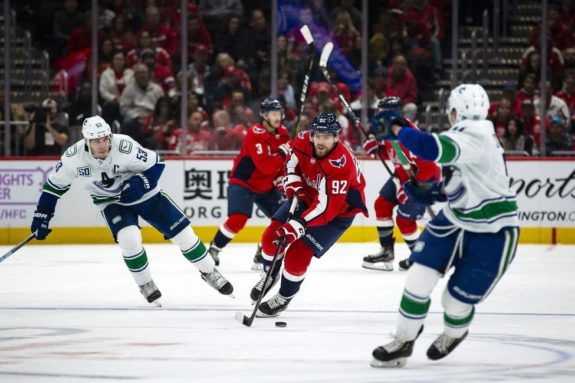
The modified Metropolitan will certainly pose some challenges for Washington, with last year’s Presidents’ Trophy winner in Boston, the team that knocked them out of the postseason in the Islanders, as well as what should be improved Devils and Sabres clubs.
Hard-working teams were able to capitalize on Washington’s lack of full efforts on many nights, particularly down the stretch, and the Capitals will see no shortage of them in the reworked division.
Ovechkin and Father Time
Washington’s biggest contract issue this season will be that of Alex Ovechkin, who is an unrestricted free agent following the campaign with the expiration of his 13-year, $124 million deal, and the Russian winger just turned 35 this September.
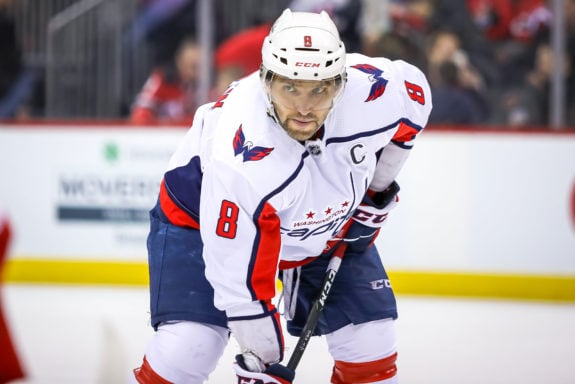
Of course, this will be an unusual season for Ovechkin coming in, as he has been relatively idle since the calendar flipped to 2020. He skated in just 27 games before the pause – for comparison, he skated in 24 during just before the team’s 2018 playoff run – then eight games during the summer in the bubble. That is just 35 games total in what will be a year’s time, and just the eight bubble games in the last nine months.
For an athlete who rarely has missed time due to injury and kept a schedule even during the 2013 lockout, the pause will allow him to be rested and healthy, but also rob him of some time to chase Wayne Gretzky’s all-time goals mark. Ovechkin had 706 before the pause and will lose 39 or more games in his quest due to the interruption.
The question is if the time off will help Ovechkin sustain his longevity with the rest, or if his skills will have diminished by being dormant in the last year to hurt his chances. The Russian star has rarely been idle since coming over to the NHL, and now with a new contract looming, if the pause will help or hurt his chances for the record.
New Hank in Town
The other major personnel question for Washington will be in net, as Braden Holtby left in free agency to the Vancouver Canucks, to be replaced by Rangers’ legend Henrik Lundqvist, with the Swede to battle with Ilya Samsonov for games in the Washington net.
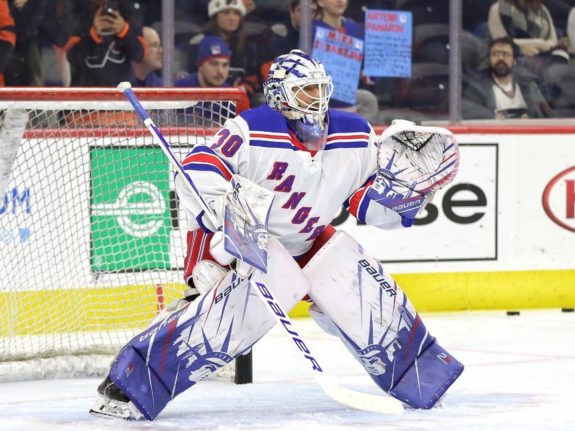
Samsonov, just 23, did himself no favors by sustaining an injury in Russia during the pause, denying himself the chance to grab the starting role for the Capitals for the playoffs, and ceding the crease to Holtby in Toronto.
Holtby, while showing flashes of the skills that got him the Vezina Trophy in 2016 and fueled the team’s run to the Stanley Cup in 2018, buckled under a sometimes rag-tag Capitals’ defense, posting a sub-.900 save percentage for the first time in his career and showing his age at times.
Now, the question is if Samsonov, who was impressive in his 26 games with Washington last season with a .913 save percentage and a 2.55 goals-against average, can take the starting role, or if Lundqvist, who has declined in his last few seasons in New York to the point where he became expendable by a buyout, will thrive with a change of scenery.
Certainly, the essential swap of Lundqvist for Holtby opened valuable cap room for Washington, allowing them to sign defensemen Justin Schultz and Trevor van Riemsdyk, thanks to the relatively small $1.5 million Lundqvist deal versus the cost of retaining Holtby’s services. But it’s also a risk with the goaltender who turns 39 in March and played just 30 games as he slipped down the Rangers’ depth chart this past season.
Washington will need either Samsonov to develop into the full starter in a short season, or hope Lundqvist to recapture some of his old magic for what could be his best shot at a Stanley Cup ring since losing to the Los Angeles Kings in 2014.
How Much Longer Is the Capitals’ Window?
Certainly, the Capitals have gotten more out of their championship window than even MacLellan thought originally, as the team seemingly had it shut on them after their loss to the Penguins in 2017. MacLellan’s original assessment proved to be incorrect, as the team lifted the Stanley Cup the following spring.
The Capitals have an aging core with Ovechkin, Nicklas Backstrom (33), T.J. Oshie (34 later this month), John Carlson (31 in January) and perhaps have a few seasons left before the team will have to fully rebuild due to age and what figures to be a flat cap over the next few seasons.
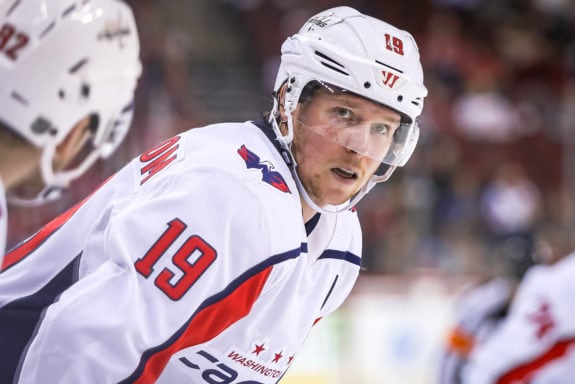
Like with Ovechkin, the wild card will be the extended rest on the older players, as some veterans may thrive on the time off while others will see their skills slip with rust. Washington does have a pair of potential young stars who could make their roster this season – particularly if the league expands it for the short year – in center Connor McMichael, who will be skating for Canada at the World Juniors, as well as defenseman Alexander Alexeyev, who is currently playing in the KHL but would return once the NHL restarts.
For a team that was as bipolar as the 2019-20 Capitals, it will be interesting to see what the addition of new coach and some time off will do for its Stanley Cup hopes.